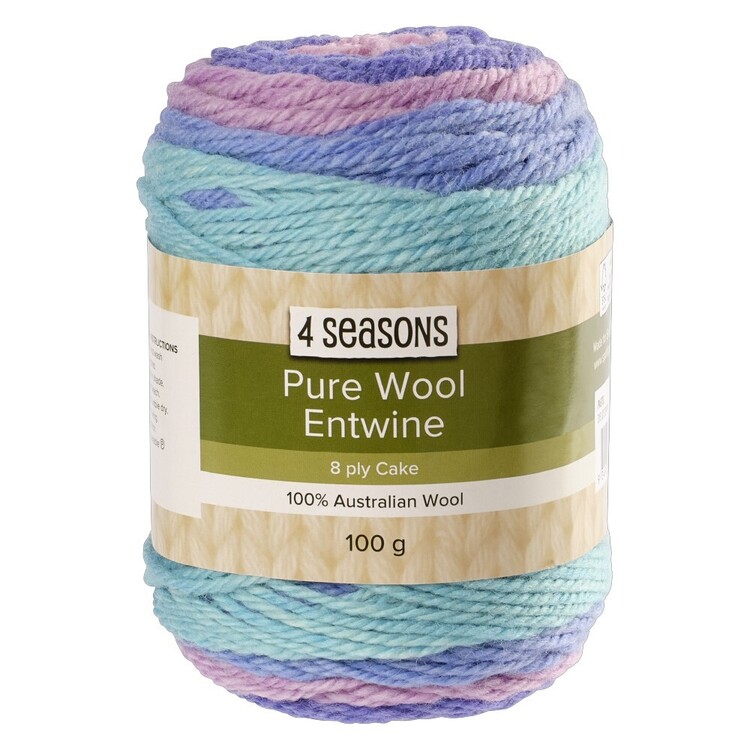 | ||
| Your browser is not supported. | ||
|
Please browse our site using any of the following options:
| ||
Knitting Wool & Crochet Wool
Shop a variety of knitting wool in different colours for your projects. Discover the huge range of wool at great prices at Spotlight. Shop now.
1 item found.
Making Your Knitting Yarn Selection Easy
Just starting out with knitting, but no idea on the type of knitting yarn you require. No need to panic, as Spotlight provides crafters with this comprehensive guide to the various types of knitting yarn and their properties. So, if you have held off on a purchase because of a lack of knowledge, be sure to read on!
What Are The Knitting Yarn Weight Categories?
One of the first things to look at is the weight categories, especially if you have a specific project in mind. Now, the weight can influence how your project looks in the end, so these are the categories you should be aware of when it comes to yarn selection.
0 weight: This is the finest type of yarn you will find out there and is obviously used for lace designs. Be warned when working with this kind of yarn, as it tangles very easily! So, this type of yarn should only be used by crochet or knitting enthusiasts with a little more experience and the appropriate tools
1 - 3 weight: Yarn with a weight number from one to three is fine yarn, which is used for lighter accessories such as socks and children's garments. You can also see this yarn marked as "sport weight".
4 weight: When you need a medium yarn, then you are looking for the number 4. This is also referred to as worsted yarn and is recommended for beginners. It is a common yarn used in a variety of projects as well, this ranges from scarves to sweaters.
5 - 6 weight: This is the thickest yarn available, used for those bulky looking accessories. You can also use this type of yarn for blankets, as it provides your project with lots of definition. Like our previous suggestion, this type of yarn is also suitable for beginners.
What Are Common Knitting Yarns And Their Benefits?
When you take a quick glance at our entire yarn collection, you will notice a tremendous amount of options. But what are the most common and what benefits do they have?
Wool: When you think of yarn, you probably think of wool. It is an affordable material that is easy to work with for most beginners. In addition to that, it is used in countless applications from sweaters to scarves.
There are two things to consider when you work with wool though. Firstly, some people can be allergic to the material, so keep this in mind when you use this for garments. Secondly, wool is harder to maintain and can only be washed on a gentle cycle.
Cotton: If you require something with easier maintenance, then you should look at cotton. This material is one of the most common fabric fibres on the market, which also brings you lots of affordable yarn options.
Cotton is also a favourite choice of advanced crafters, as this material shows off your stiches really well. On the flipside, beginners may find that it shows mistakes a lot easier too. So, cotton might not be the best too begin with. Instead, choose wool or a thicker acrylic until you become more proficient.
Cashmere: If you have the budget, then you can look into a luxury yarn such as cashmere. The material is super soft and often becomes softer as it is worn. Of course, such brilliant qualities do come with a higher price tag and a lot more maintenance.
Silk: Like our previous suggestion, silk needs a gentle hand wash or dry cleaning, but you do get so many benefits in return. It is smooth, beautiful, and has a lovely sheen that cannot be matched by most materials. Of course, silk is more expensive than cotton or wool, so we recommend waiting with silk until you mastered your crochet and knitting skills.
Rayon: When you do not have the budget for silk, you could choose the manmade version in the form of Rayon. It is considerably cheaper than silk and provides a similar appearance. It also dyes well, so you can find a lot of this yarn in bold colours.
You can also wash rayon in the washing machine, which makes maintenance just as easy as cotton. However, always make sure that you check the care label beforehand.









